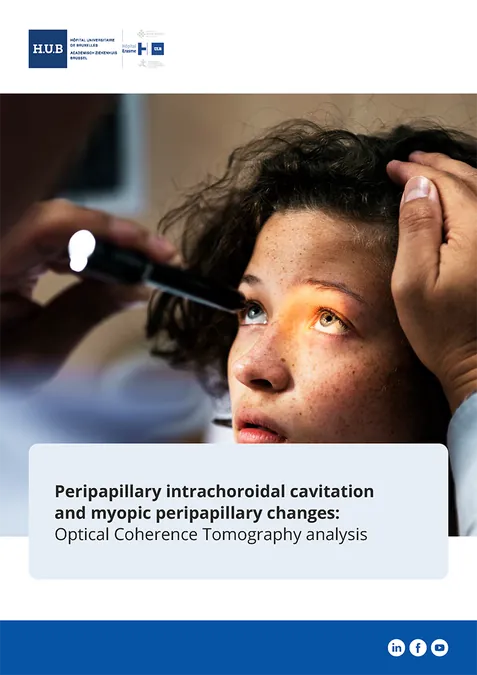
Unveiling the Hidden Dangers of Myopia: Peripapillary Changes You Need to Know About!
2025-05-28
Author: Wei
Myopia: A Growing Global Threat
Myopia is not just a simple vision problem; it's a ticking time bomb for our eyesight. By 2050, a staggering 50% of the global population is predicted to be myopic, raising alarm bells over serious eye-related complications.
What Exactly Happens in the Eye?
Myopia stretches the eyeball in an anteroposterior direction, triggering a cascade of harmful structural changes that can severely impact vision. Recent breakthroughs in Optical Coherence Tomography (OCT) are giving us unprecedented insights into these alterations.
Understanding Peripapillary Staphyloma: More Than Just a Term!
The thinning of the eye wall due to myopia can lead to the formation of posterior staphylomas, particularly around the optic nerve head—this is known as peripapillary staphyloma (PPS), a key indicator of pathological myopia.
The Distinct Oval Shape of Myopic Discs
Did you know that optic discs in myopic patients become more oval-shaped? This phenomenon, referred to as disc ovalization, can be quantified—helping eye specialists assess the severity of myopic conditions.
What is the Myopic Conus?
The myopic conus, a crescent-shaped atrophic area next to the optic disc, reflects significant structural changes during myopic elongation. This condition showcases the absence of almost all ocular wall layers except for the sclera.
Peripapillary Intrachoroidal Cavitation: A Shocking Discovery!
Enter peripapillary intrachoroidal cavitation (PICC)—this vividly colored lesion is more than meets the eye. It's actually a type of suprachoroidal detachment, clarified through advanced OCT techniques!
Multi-Change Dynamics in Myopic Discs
Typically, multiple myopic alterations coexist within a single optic disc, each with varying severity. It's reported that 10.4% of eyes with gamma peripapillary atrophy (γPPA) exhibit PICC, while 20.5% of eyes with PPS show the same.
The Pressing Need for Accurate Diagnoses
Why is understanding these changes critical? Because the visual field deficits can mimic those seen in glaucoma, leading to potentially disastrous misdiagnoses. Therefore, ongoing research strives to differentiate between these conditions.
Eye Movements: The Hidden Link to Myopic Complications
The mechanics behind peripapillary myopic complications are still being unraveled. New studies suggest that the pulling force exerted by the optic nerve sheaths may contribute to these troublesome deformations in myopic eyes.
Quantifying Myopic Changes for Better Insights
Using disc ovality indexes to quantify changes can standardize findings and enhance our understanding. Research shows that a low ovality index correlates with a higher prevalence of visual field defects, marking a crucial area in myopia studies.
Conclusion: The Road Ahead
As myopia increasingly emerges as a public health crisis, we must prioritize identifying and quantifying its complications to reverse the trend. With urgent studies underway, the goal is not just to understand but to combat this growing epidemic effectively.


 Brasil (PT)
Brasil (PT)
 Canada (EN)
Canada (EN)
 Chile (ES)
Chile (ES)
 Česko (CS)
Česko (CS)
 대한민국 (KO)
대한민국 (KO)
 España (ES)
España (ES)
 France (FR)
France (FR)
 Hong Kong (EN)
Hong Kong (EN)
 Italia (IT)
Italia (IT)
 日本 (JA)
日本 (JA)
 Magyarország (HU)
Magyarország (HU)
 Norge (NO)
Norge (NO)
 Polska (PL)
Polska (PL)
 Schweiz (DE)
Schweiz (DE)
 Singapore (EN)
Singapore (EN)
 Sverige (SV)
Sverige (SV)
 Suomi (FI)
Suomi (FI)
 Türkiye (TR)
Türkiye (TR)
 الإمارات العربية المتحدة (AR)
الإمارات العربية المتحدة (AR)